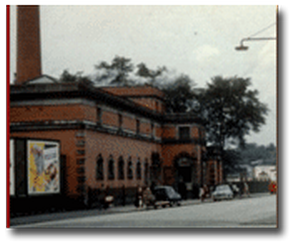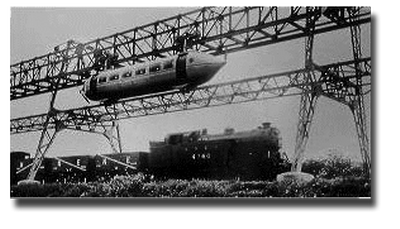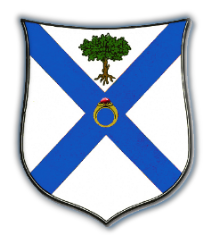1900's
History > Centuries
Pollokshaws in the 1900’s
A potted history of what went on in Pollokshaws
Changes Afoot
 The Burgh of Pollokshaws was annexed by Glasgow in 1912, just prior to this in 1904 a Children’s Day Home was instituted for the care of small children while their mothers were out at work. This was one of the last acts of the Town Council.
The Burgh of Pollokshaws was annexed by Glasgow in 1912, just prior to this in 1904 a Children’s Day Home was instituted for the care of small children while their mothers were out at work. This was one of the last acts of the Town Council.Plans the city had for its new suburb were set aside when war broke out in 1914, and ten years were to pass before any significant changes were made. Between 1924 and 1939, a considerable amount of work was done including rebuilding the three road bridges over the River Cart. The Shaw Bridge, the first of which dating from 1654, had been rebuilt in 1752 and was again reconstructed to more than double the width in 1934. When tram-lines were laid to Pollokshaws West around 1890, the Pollokshaws Road (then Barrhead Road) bridge was just wide enough to take the twin tracks with a narrow pavement on the west side only. Rebuilt in the early 1930s, it too was doubled in width. The Factory Street bridge over the River Cart was built in 1924/25, Auldhouse Public Park was opened and other new roads constructed at this time. In 1931 the Town House, now 128 years old and in poor condition, was demolished but the clock tower was retained and made secure.
The Three R’s
By 1836 there were five schools in the town: the Parish School funded by Eastwood Church , the Town School located in the Towns House and controlled by the Town Council, the Roman Catholic School, and two others. Like the Parish School the other four also charged fees and had one large classroom and one teacher, but unlike the Parish school the others also held evening classes for adults. In addition to the schools, several of the factories had classrooms where their child employees were taught to read and, in some cases, write. In 1844 an educational survey was made in Pollokshaws and the following figures were produced:
475
624
1099
Children from five to fifteen years of age at school
Children from five to fifteen years of age not at school
Total
272
488
760
Children of the same age group who could read and write
Children of the same age group who could only read
Total
339
1099
Plus those who could neither read or write
Total
On Friday the 4th of August 1854 the first step was made in Pollokshaws to provide free education for children, when a public meeting was held to discuss a plan to start an Industrial School for which no fees would be payable. With the support of Sir John Maxwell the school was established, and in addition to basic education the boys were taught tailoring, carpentry, and shoemaking, each boy becoming proficient in one of these trades.
Boys under seven years of age were taught to knit while girls were instructed in sewing, knitting, and the various aspects of housekeeping. Both sexes were also taught practical gardening on forty plots of ground. Educationally the school was very successful, and also financially self supporting by the sale of articles and vegetables produced by the children. It was taken over by Eastwood School Board in 1872 and renamed Sir John Maxwell School, the present building with that name being erected in 1909 as a primary school. With St Convals School being completed slightly earlier in 1906.
Clean and Cleaner
Then They Got Sewers
A source of disease was being created by the pollution of the River Cart, into which local sewage, along with that from Thornliebank via the Auldhouse burn, was being deposited. The Cart had become in effect an open sewer, the stench from which in summer was all pervading. Many years went past before the problem was tackled, and it was not until 1910 that sewers were laid in Pollokshaws and Thornliebank and connected to the Glasgow sewage system. After this the waters of both river and burn greatly improved and the danger to health reduced.
Take a Bath
 Around 1905 a suite of individual baths for the use of the public was installed in a low building between tenements in McDougal Street which still stands, but is now a contractors store. These were superseded in 1928 when the present baths, swimming pool and 'steamie' building in Ashtree Road , now the privately owned Pollokshaws Sports Centre, was constructed. However, because of Council spending cuts the facility was closed completely at the end of 1999 and the above project approved.
Around 1905 a suite of individual baths for the use of the public was installed in a low building between tenements in McDougal Street which still stands, but is now a contractors store. These were superseded in 1928 when the present baths, swimming pool and 'steamie' building in Ashtree Road , now the privately owned Pollokshaws Sports Centre, was constructed. However, because of Council spending cuts the facility was closed completely at the end of 1999 and the above project approved.For King and Country
Early in the 20th century the Territorial Army replaced a previous volunteer force that had premises in Cogan Street, but the hall became inadequate for the new force so a new building was constructed after 1913.
At that time recruits were only accepted from within the Eastwood Parish bounderies.
What No Telly?
The cinema first came to Pollokshaws in 1910 when a film show for children was started in the Burgh Hall on Saturday afternoons. In 1921 James Graham built a cinema with seating for 980 at 99/103 Main Street . It stood on the area now occupied by part of the car park of the Riverbank Street multi-storey flat, but fronting on Shawbridge Street . It was the MAXWELL for the first few years, when there was amateur stage shows as well as films. In 1932 he leased it to J. Boe (of 38 Rossendale Road ), who renamed it the PALLADIUM, but Boe gave up the lease and closed it in 1934. Then Graham re-opened it but later sold it to a Miss Annie M. Burns. It was then managed by a Mr. Sagan who again renamed it this time The POLLOK, a name it retained until final closure in 1958. Falling attendances, caused by depopulation before the re-development, and the advent of TV, had led to its closure. The building was demolished in 1961/2. The writer was never in it but remembers hearing tales of its reputation as a flea pit, and there were stories told of the thrup’ny rush, children crowding into the matinee for three old Pennies (less than two new pence).
Another Scott’s Inventor
 One of a family of eight children, George Bennie, designer of the Bennie Railplane, was born in 1891 in a 24-room mansion house, Auldhousefield, that stood on the site of the bleachfield on the south side of what became Westwood Road . In the 1920s Bennie designed a system of overhead travel by a track suspended from ‘A’ frame gantries. A 131 metre experimental length of it complete with a working propeller driven car was constructed at Milngavie in 1929, and many influential men of the transport industry came from far and wide to inspect it. But it was a concept too advanced for its time in this country and nothing came of it, but the test track remained as a landmark between the railway line and the A81 road until it was dismantled in the late 1950s.
One of a family of eight children, George Bennie, designer of the Bennie Railplane, was born in 1891 in a 24-room mansion house, Auldhousefield, that stood on the site of the bleachfield on the south side of what became Westwood Road . In the 1920s Bennie designed a system of overhead travel by a track suspended from ‘A’ frame gantries. A 131 metre experimental length of it complete with a working propeller driven car was constructed at Milngavie in 1929, and many influential men of the transport industry came from far and wide to inspect it. But it was a concept too advanced for its time in this country and nothing came of it, but the test track remained as a landmark between the railway line and the A81 road until it was dismantled in the late 1950s.The Wingate Dynasty
Part I of the history of the Wingate family covering the years 1778-1878 is of great interest to anyone studying Pollokshaws and its surroundings of that time. The Wingate men were nearly all colliers who worked initially in pits in Govan, and came to the Pollokshaws area in the early 1800s. The family had extended to a number of branches, nearly all of which were connected to mining, from digging out the coal to colliery manager, and planning and sinking shafts for new mines. Pits mentioned are at Cowglen, Woodneuk (at the junction of Kennishead Road and Boydstone Road ), Nitshill, Darnley, Lochinch etc. Various families of Wingates lived in Pollokshaws and will be found in census returns from 1841 at addresses in Pollok Street, Main Street and King Street . There are birth, marriage and death records, with one or two of the latter buried in the Old Vennel that are mentioned on gravestones. Towards the end of the 19th century the main branches of the family moved away from the area, some went down south while others went overseas. The title of the unpublished research document is BORN TO COAL, The History of the Wingate Family, Part 1: Scotland (1778-1878). It was compiled by Dr. Guy A.S. Wingate and is dated June 1992. A copy of part 1 is currently held in the Glasgow District Library's Pollokshaws branch.
One descendant of this family made a name for himself with daring exploits on the campaign in Burma against the Japanese during World War II. He was Brigadier Orde Wingate, an unconventional commander who had difficulty working as part of the military team. He was courageous, but preferred to work independently with his own units, the Chindits. But he was killed in an air crash during the operation to clear the Japanese out of the South East Asian mainland. Of him Sir Winston Churchill said "There was a man of genius who might well have become also a man of destiny." - Winston Churchill.

